Job finished. Update – 03/5/17
Looking around the yard, I notice that of the nine boats being worked on today, the youngest boat is over 10 years old and the oldest is 80 years old.
The majority are between 15 and 30 years old, and 28ft and 60ft in length. Predictably the three oldest are wooden, the five grp boats are all in the 18-30 club and youngest of our current crop is a 57ft’ foot aluminium, iceberg chasing, ketch.
Most are in the yard for several reasons: three are having new engines, three are having new decks, two are having new chain plate knees and bulkheads, two are having new ? (water, diesel?) tanks, two are undergoing full restoration and one has finished her full restoration and is now floating and having the finishing touches made before returning to her owner.
So many times the cause of a restoration starts with leaking decks. Modern boats suffer the same fate as well. Two boats currently in for new knees and chain plates were also because of leaking decks, a 57ft aluminium ketch is in because its teak deck had lifted and the aft deck of a Colvic Watson is undergoing strengthening surgery and curing some, you guessed it, leaks in the deck.
I’d argue that fresh water is a far bigger evil than the salty stuff, in terms of keeping you afloat.
If you don’t keep a close eye on through deck fittings by the time you see evidence the damage has already started.
The biggest culprits are window frames. genoa tracks, stanchion bases and through deck chain plates.
The first place for water to explore once past failed sealant is the deck core.
The core is usually balsa, foam or plywood or a mixture.
If its wood its obvious what will happen over time, with foam you might be lucky although water will encourage delimination of the deck upper and/or lower skin from the core and slowly spread.
The next place for water to reach will be the back of headlining or trim that covers the entry point.
The water can travel a long way before emerging as a drip usually on the back of your neck whilst trying to read a chart at the nav station.
The danger is that in the case of chain plates, water will get between the chain plate and the knee or bulkhead it’s attached to.
It will then travel along the bolts and start to soak the wood, that is usually encapsulated in grp, which now essentially turns into an unhelpful bucket.
The wood rots and the chain plate will lift, usually raising the deck in the area before eventually failing resulting in a lost rig or worse.
Obviously this wont happen over night but most of us are sailing in boats over 10 years old and that’s enough time for this to become an issue.
We have two boats in their 20’s at the yard with this problem, severe enough to mean cutting out the old knees and replacing them.
If you’re worried but can’t see any evidence see if you can get hold of a moisture meter which often gives you a heads up.
If you suspect water has got in then you’ll need to dig further.
We remove the chain plates which allowed us to have a good poke at the core with something pokey.
On the Pasport 40 the core was pretty good, damp but still firm with no obvious signs of damage.
On the moody however the plywood core was wet and rotten and needed to be cut out around the chain plate slot and the old cover plate fixing screw holes, it also extended aft and outward a few inches from the slot which follows the fall of the deck.
Down below it was a different story on the Passport 40 with the inside of the Knees saturated, the wood turned to mush.
Water had even got between the knee laminate and the hull and on removal we saw at least a couple of cupfuls of brown water drain down into the bilge.
On the moody we drilled out a core from the knee around 3ft below the deck.
The moisture meter was not happy even three feet down from the entry point and whilst not soaking it was bad enough to condemn the knees especially considering the poor design of the chain plates.
Repairing the deck on the Moody could have been done from inside but given we were going to redesign the chainplate and incorporate a sealed top plate which would cover the repair, it was decided to repair from the top which is a whole lot easier to do saving time and money.
So first we cut away the top deck laminate to gain access to the core.
The best tool for this and one of the most useful tools in the yard is the Oscillating Multi-tool in both 240v and 18v battery versions.
The blades are horrendously expensive but if you’re paying £30 an hour for me to do this and it takes less than half the time than using a chisel then it makes sense.
Once the wet core is removed and you’re back to solid wood then its time for a heat lamp for a day or so to get the moisture content down and give the epoxy half a chance to work its magic.
When dry, we tape up the chain plate slot below decks and coat the exposed edge of the core with warmed up epoxy.
Warming thins out the epoxy and it will soak in better but shortens working time so keep the batches small.
Before this has time to go off we build back up to original deck level with epoxy and glass cloth.
I used a couple of layers of powder bound csm (Powder bound csm is specifically designed for use with epoxy you should never use normal emulsion bound csm with epoxy) and then layers of 300gm and 450gm biaxial cloth.
I like to use the csm (chopped strand mat) initially as I believe I get a better initial bond and its easier to manipulate to ensure I get coverage over the edge of the core material.
Below decks things are about to get really very messy.
Cutting old grp is bad enough and the knees will come off pretty easily with the multi-tool.
Grinding back to good clean laminate so we have something nice to epoxy too is a different matter.
The dust gets everywhere and I mean everywhere.
Plastic sheets and masking tape covering everything you can see, floor, roof, bunks everything and even then there will be a dusting of white powder in the aft cabin locker under the bed!
We normally encourage owners to come in help and especially carry out some of the mundane tasks as it saves them money.
I’m not sure I’d like to pay someone to drive a vacuum cleaner at yard rates but sometimes there is no choice.
Once the inside of the hull is nicely keyed and most of the dust is sucked away we can bond in the new plywood knees.
We use the old knees as patterns and bond in the new ones on thickened West epoxy using 404 high density filler to bed on and 406 colloidal silica for filleting.
Once this has gone off we abrade the fillet to remove any blush and round off the inside edge of the knee as glass cloth does not like going round sharp corners, then we can start to sheath the knee.
This soaks up time and it can take a full day to glass in a full height knee.
Its important that you try and get it all done in one go so you don’t have to go through the removal of the amine blush which happens during the epoxy curing process.
You could use a product called peel ply which avoids this issue though its not cheap and for intricate shapes can be a pain to use.
Another issue with epoxy is unlike polyester resin you can’t afford to mix up too much resin at a time for fear of it exotherming (going off) especially if you warm the epoxy to reduce its viscosity to aid wetting out the glass.
So I tend to mix up a maximum of 8 pumps at a time.
Coating the whole area first I lay up two layers of 250g powder bound csm followed by 4 layers of 300g biaxial cloth.
That essentially seals and sheaths the knee.
I then start adding the tabling which is the main laminate that joins the hull to the knee.
Using lengths of 150mm wide 450g biaxial cloth I lay up 6 layers starting with around 125mm on the hull and 25mm on the knee and then overlapping by around 25mm each time, ending up with 125mm on the knee and 25mm on the hull.
The area that will take the loading from the chain plate gets additional layers, taking into account the direction of stress.
Once cured the position of the chain plate bolts can be marked.
Before finalising the positions of the bolts check that there will be access when the interior woodwork is put back in place so that you can carry out regular inspection and future re-sealing if required.
Ensure that if the knees are used in the mounting of the interior trim at any holes made by screws are suitably sealed.
Once happy, core drill the bolt positions out to 25mm diameter.
You can check each core plug to check laminate thickness and see how well each has bonded and whether I’m any good at laminating.
Tape up on side of each hole and coat the bare wood with neat epoxy followed by filling each hole carefully with a thick epoxy high density mix. I use a syringe for this usually but you need to ensure all the air escapes otherwise you can get a void which will need to filled afterwards.
When this has set we can re-drill the final bolt holes, in this case at 12mm.
The chain plates can now be fitted, either bedded down on a suitable sealant or a epoxy silica mix.
These repairs should be good for another 25 years at least, though fresh water has a horrible way of finding its way in.
So don’t ignore the soggy tide tables, investigate why before it attacks something else.
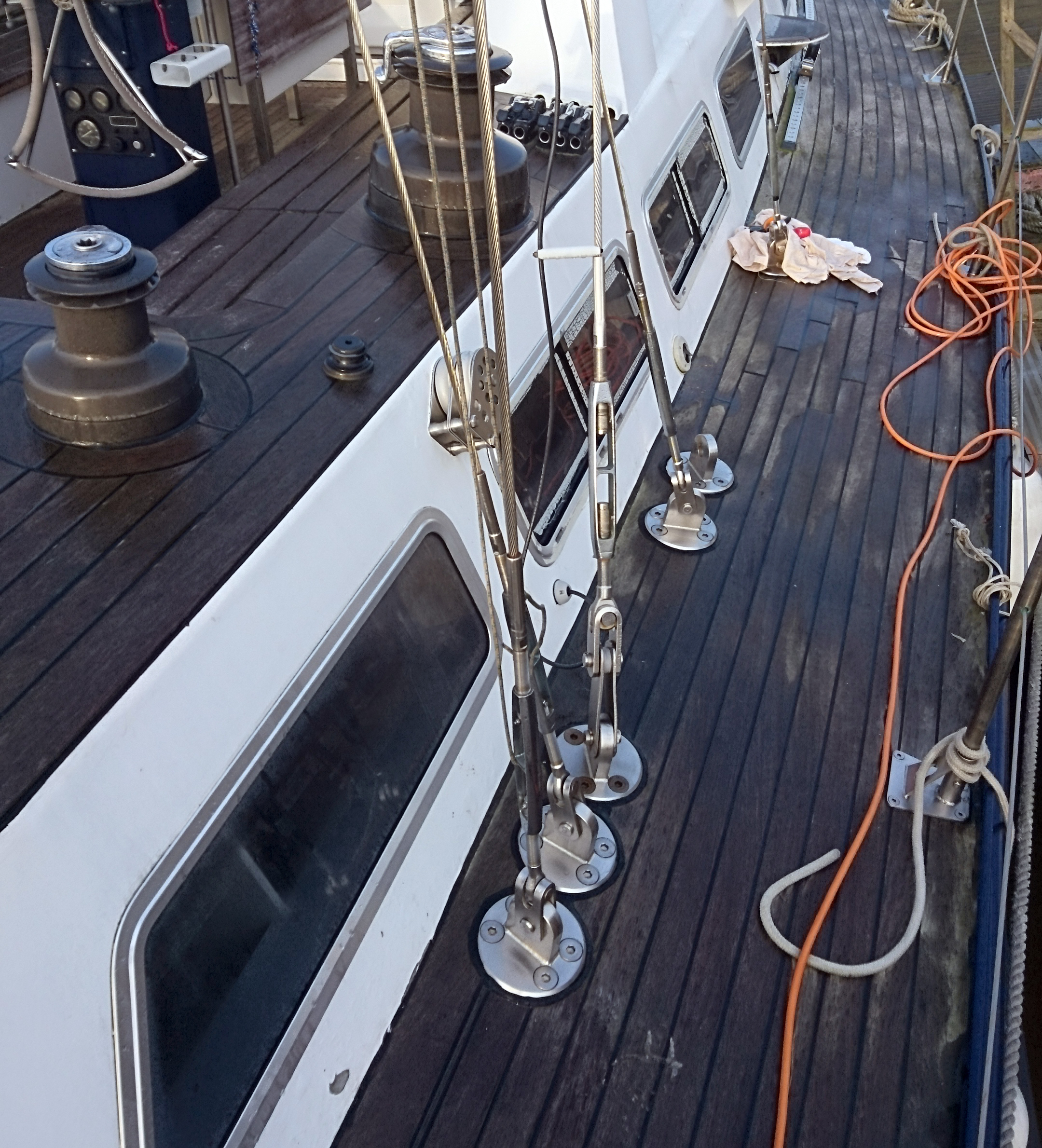
Typical modern deck with multiple through deck fittings.
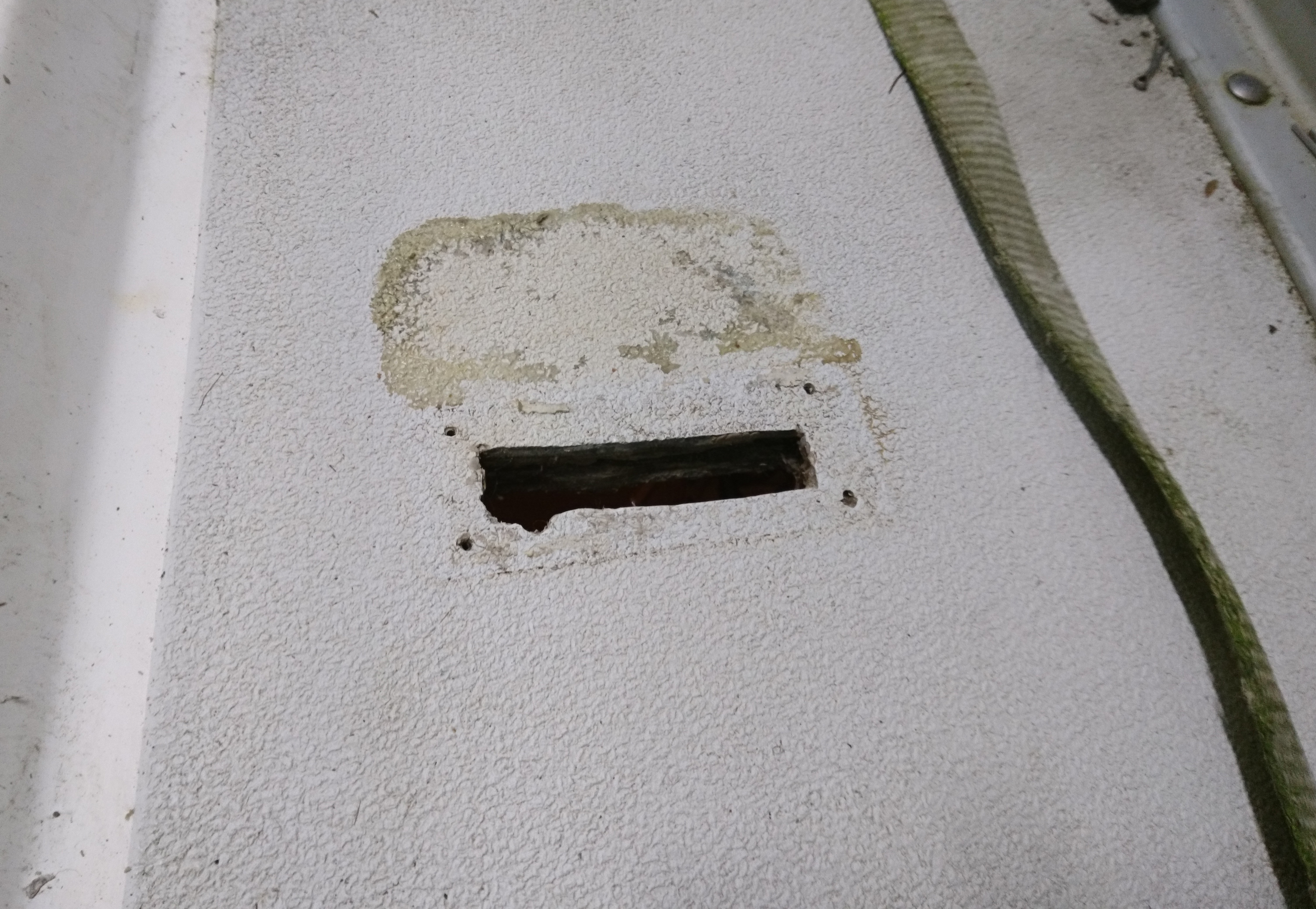
Removal of the fitting will allow access so the immediate area of the core can be inspected.
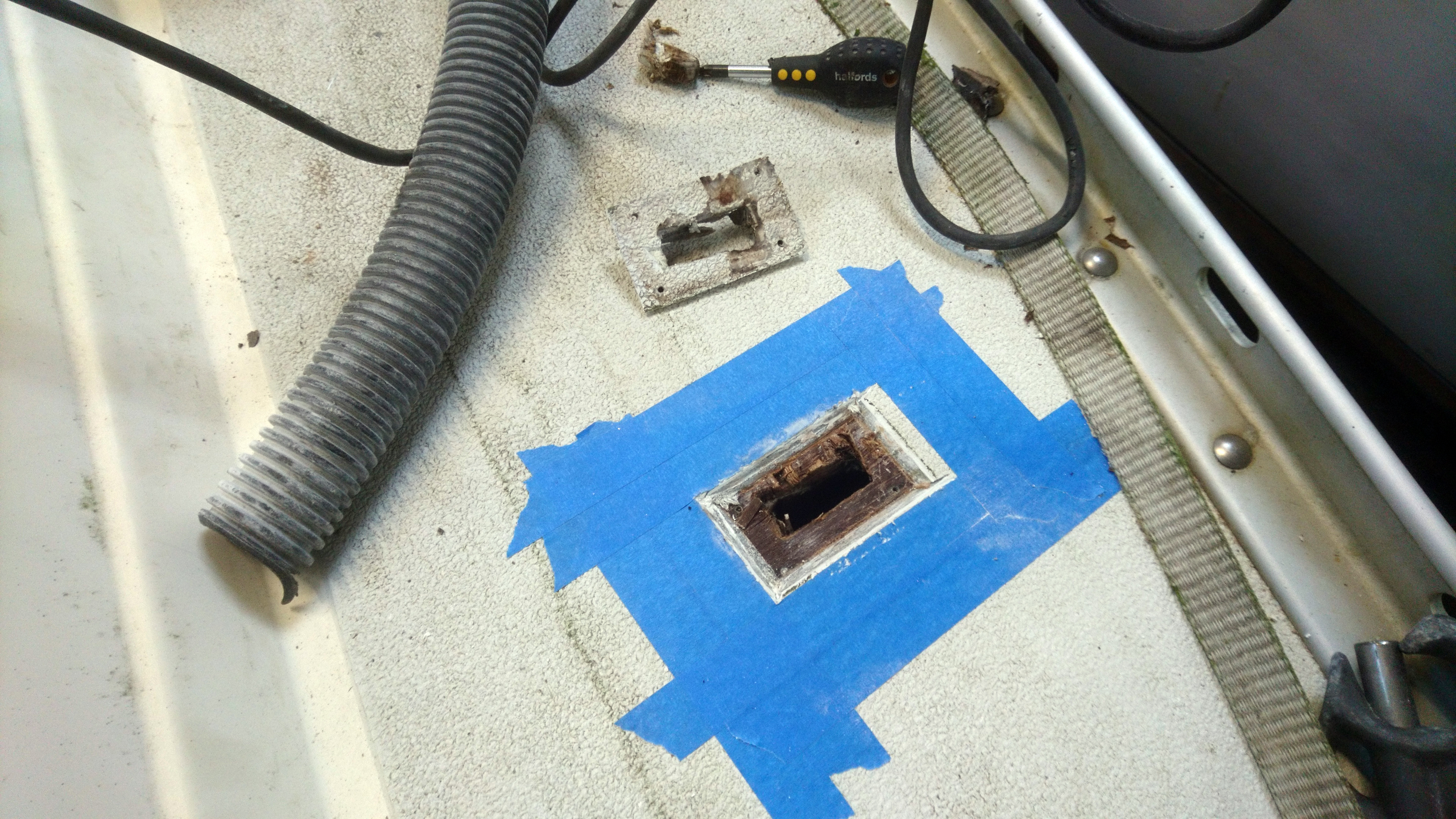
After identifying water ingress the choice is to either cut it out below decks or in this case, above decks.
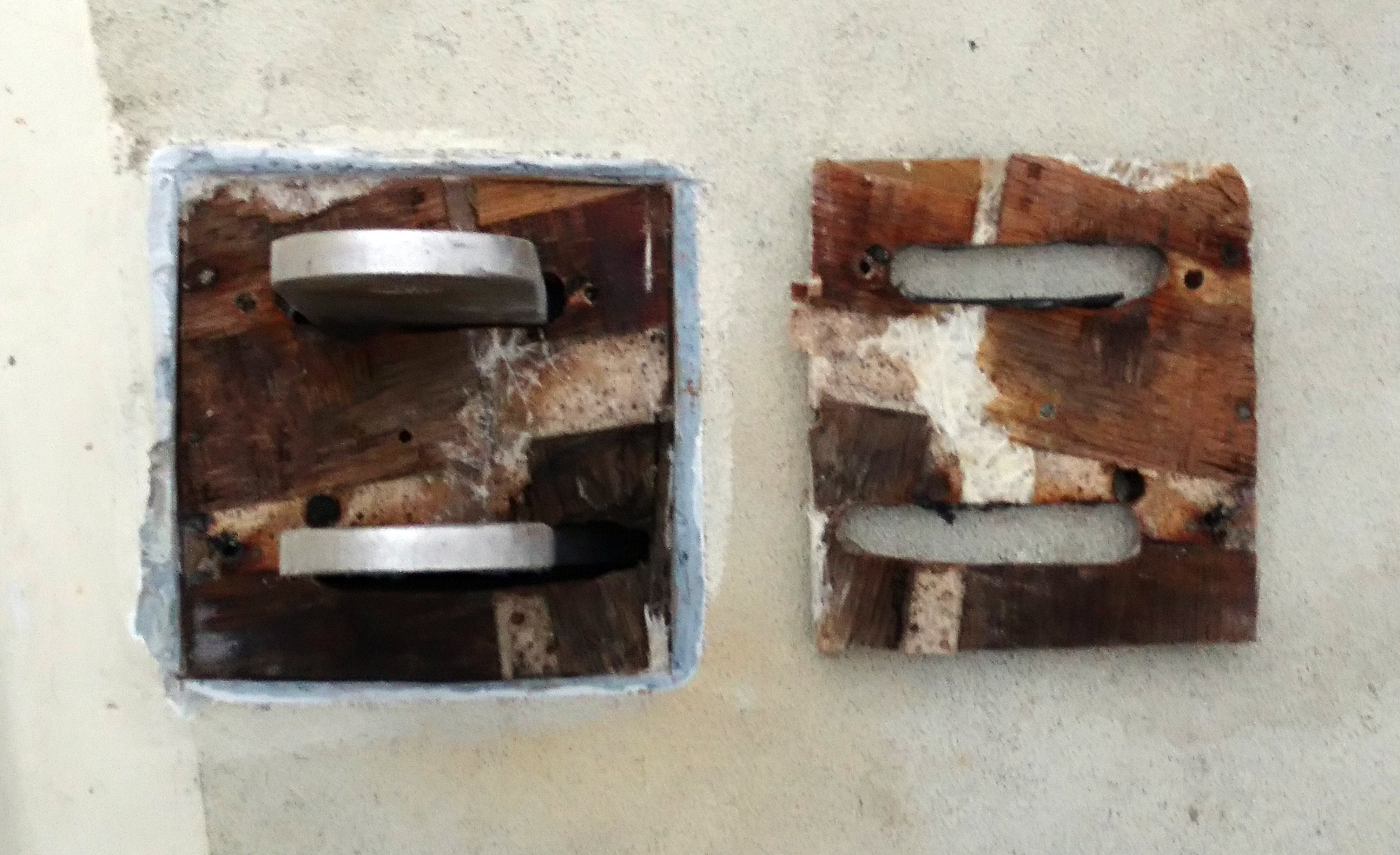
Deck skin removed on Passport 40. The dark wood is wet the rest is damp. Note the poorly cut out slots for the chain plates by the original builder.
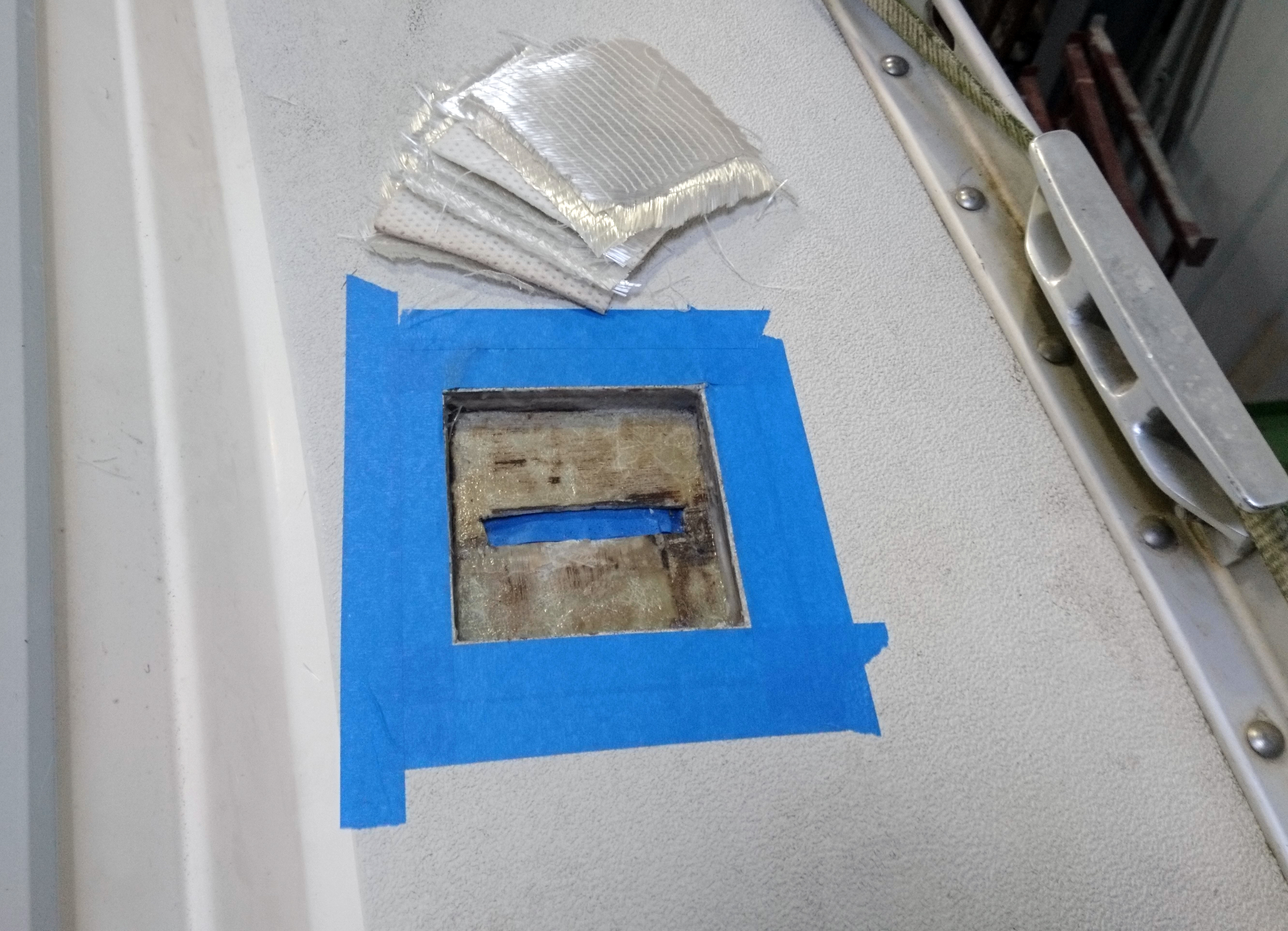
The damaged core can be removed without damage to the inner skin.
Assessment can then be made to the extent of the core damage.
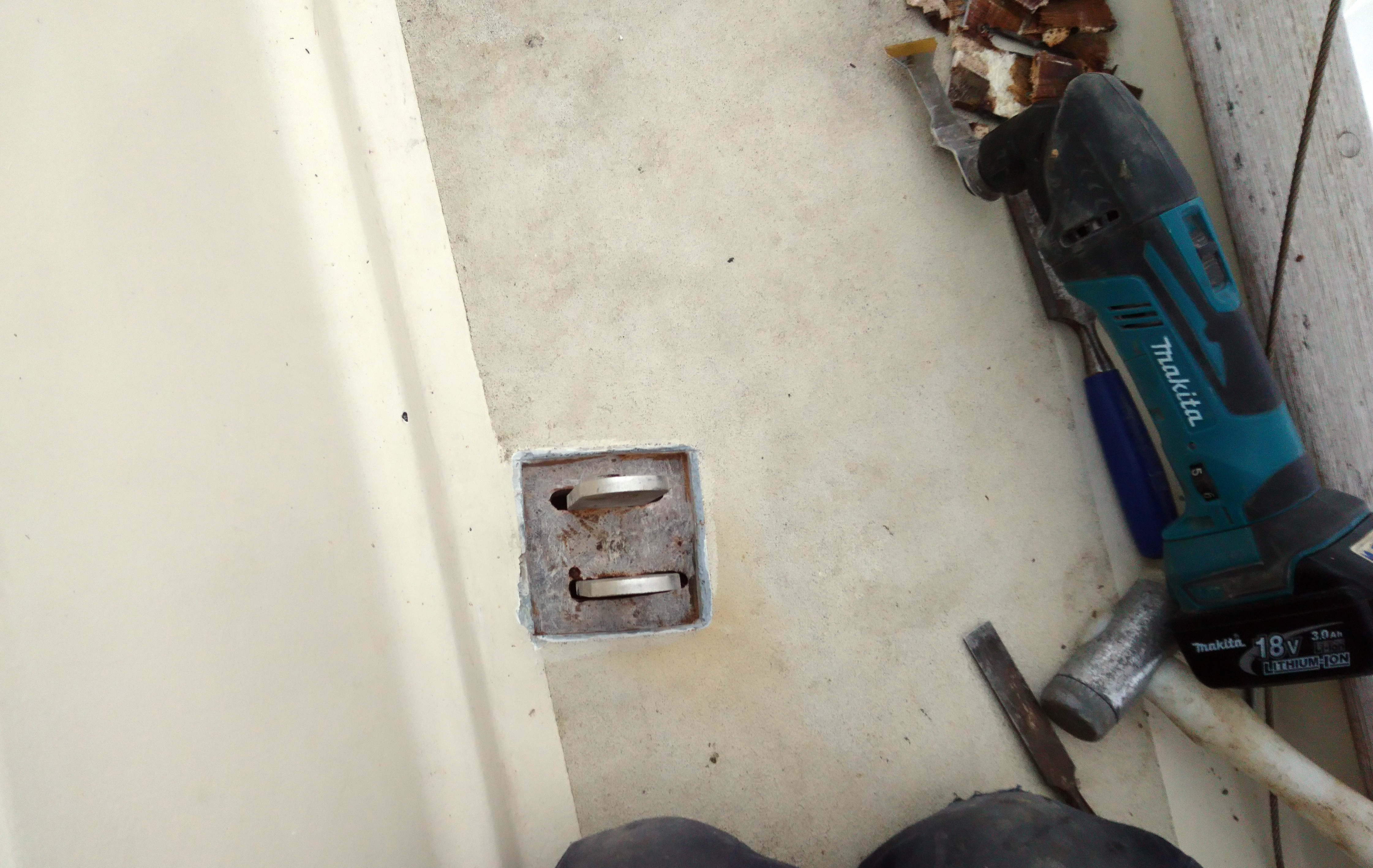
Top layer and soggy core removed
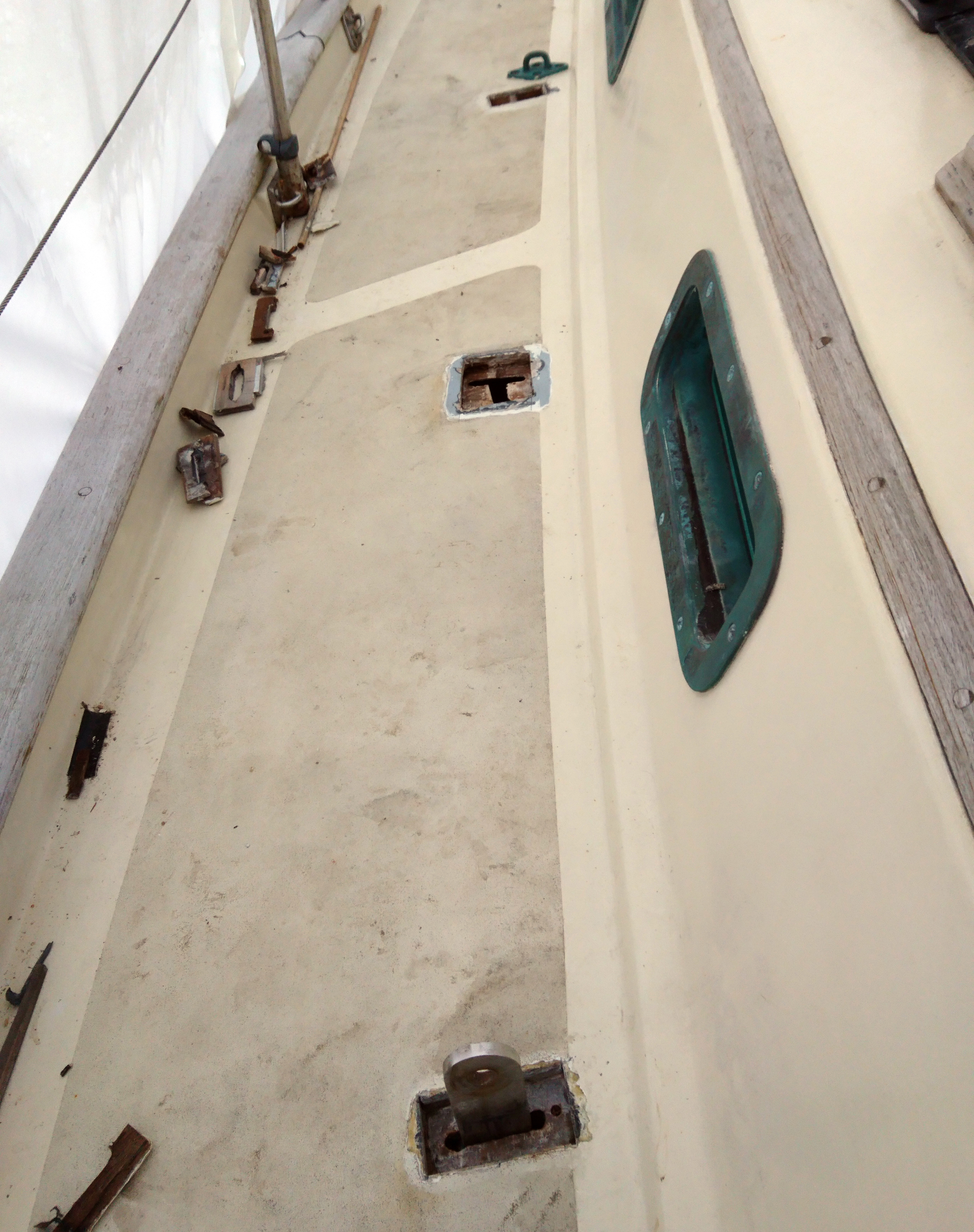
Passport 40, chain plate sections removed ready for drying out and filling/glassing with Epoxy
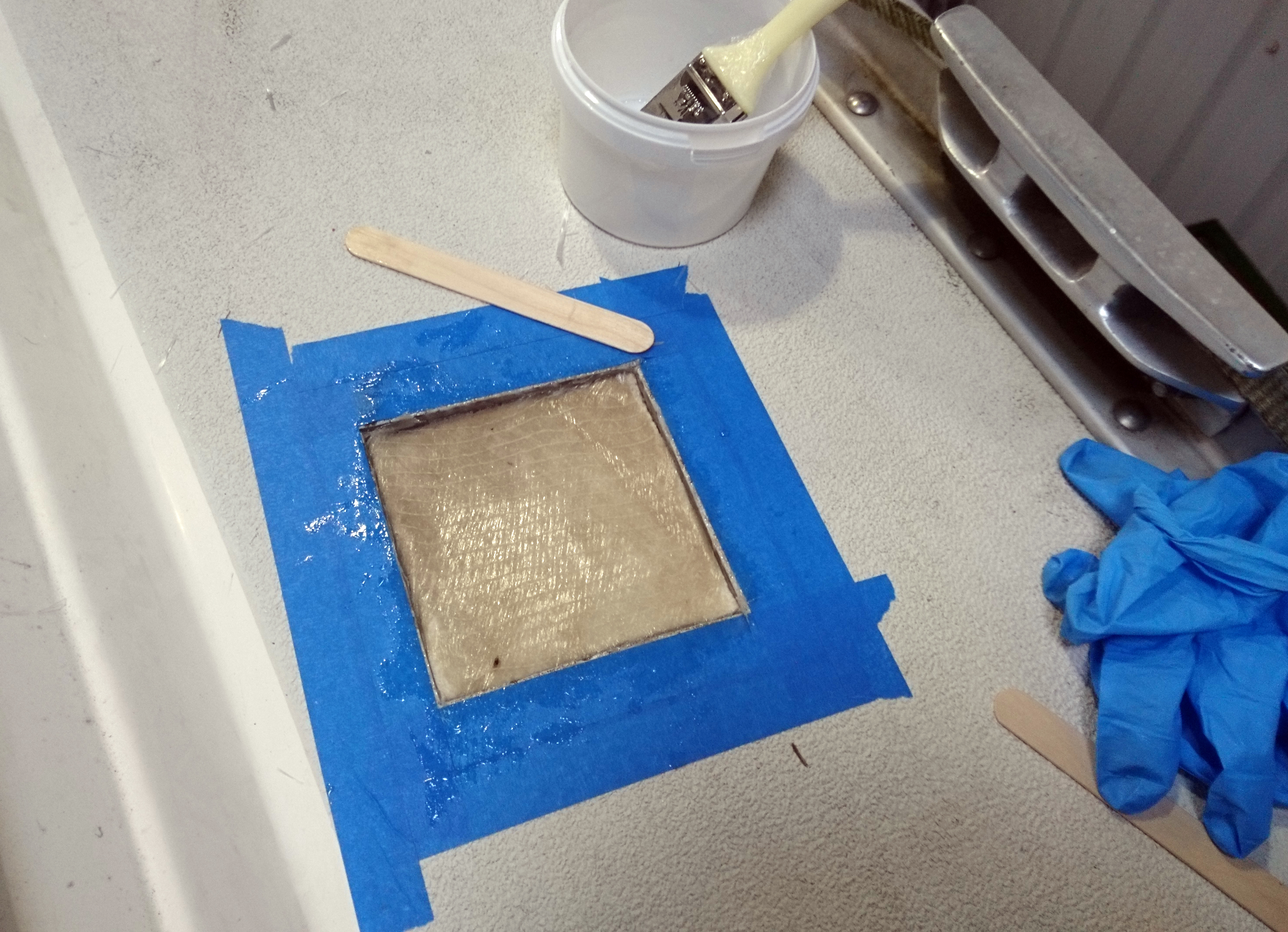
Seal the dry core edge with neat epoxy, then fill with thickened epoxy if necessary before laying up with epoxy/glass.
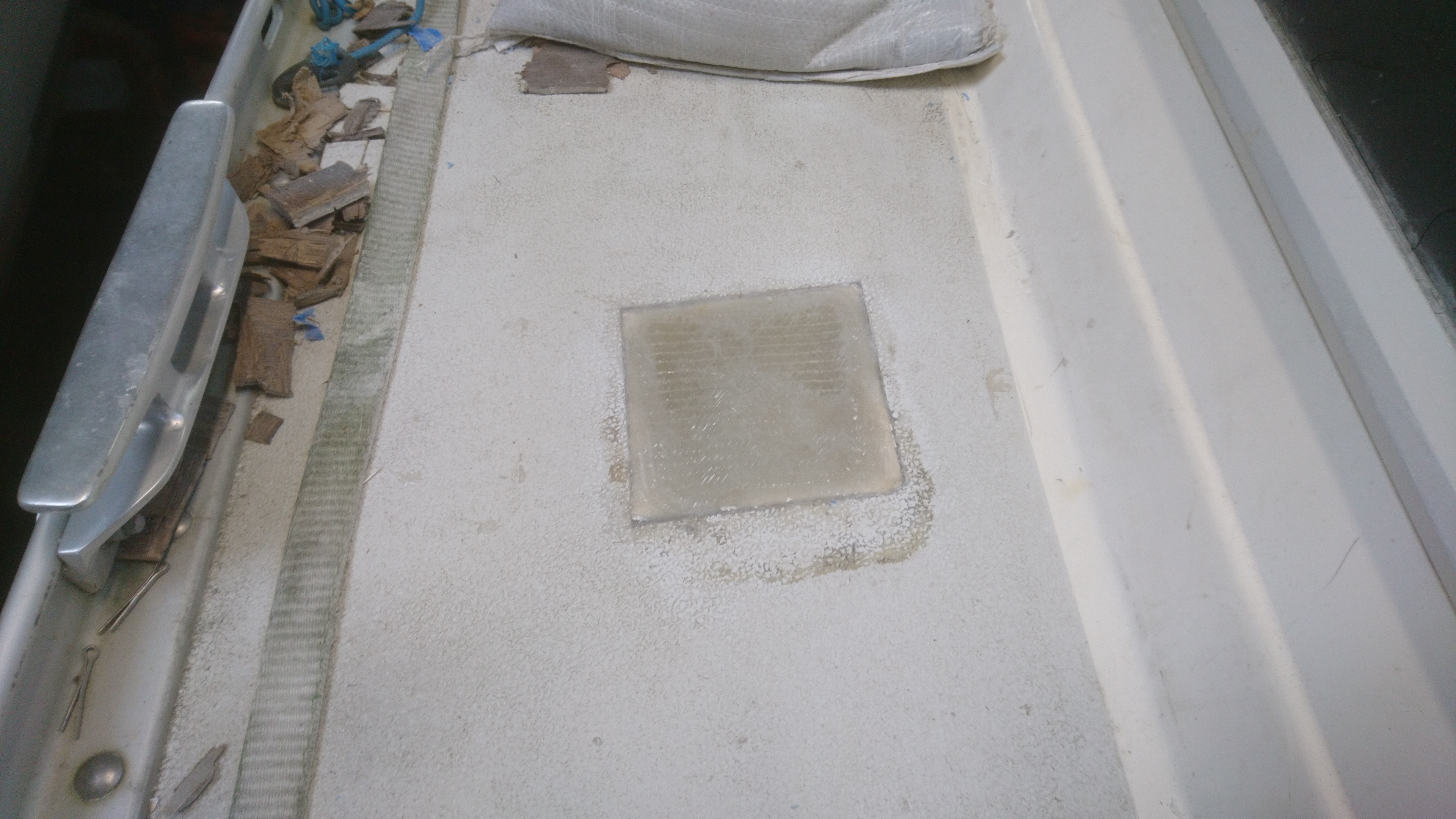
Continue to add glass until just proud of the deck and sand back flush. Be careful not to sand away any non-slip from the surrounding area.
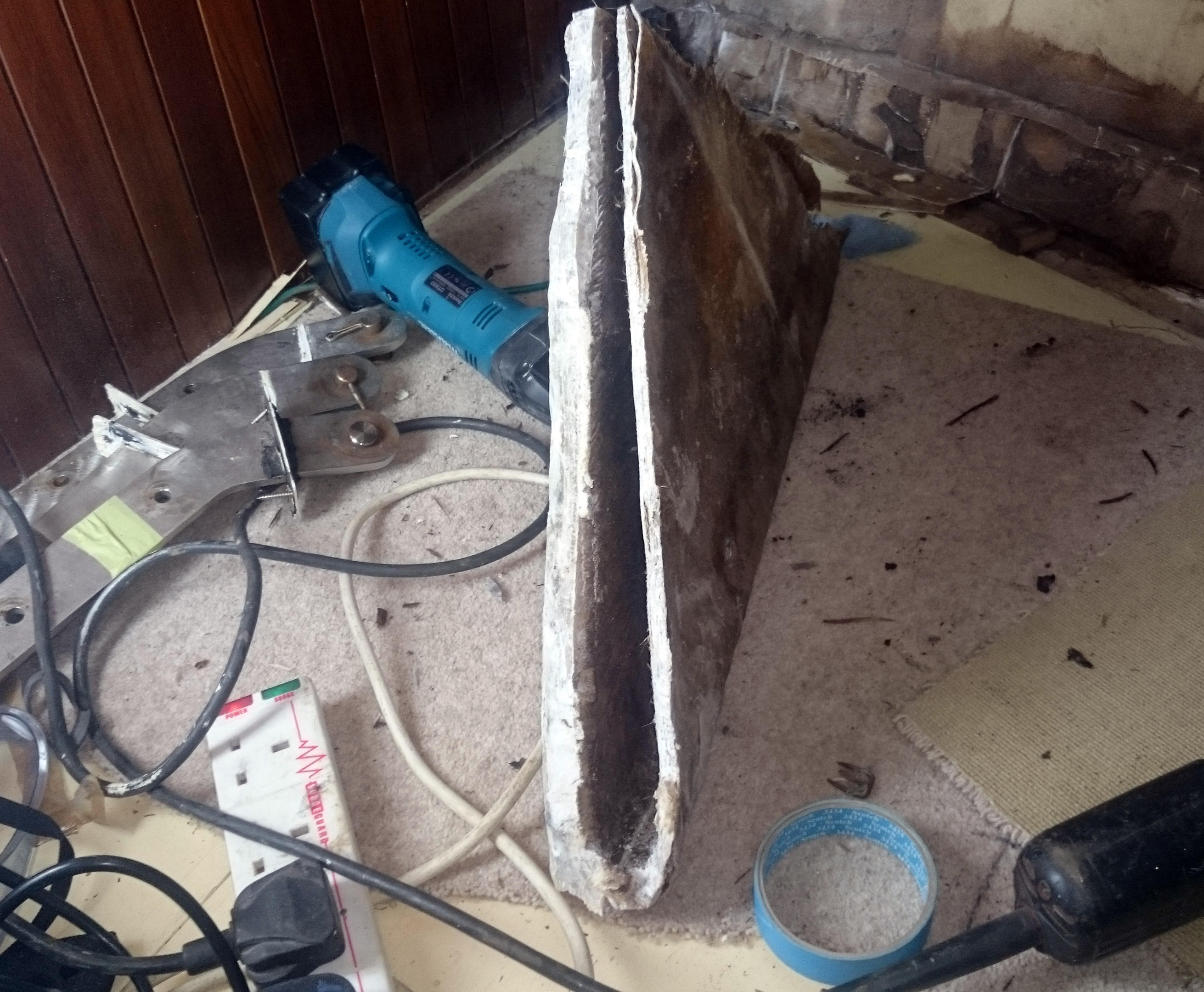
After time, water leaking into a knee will turn the wood into mush leaving just the outer shell which has little shear strength and certainly will not stand up to significant rig loads.
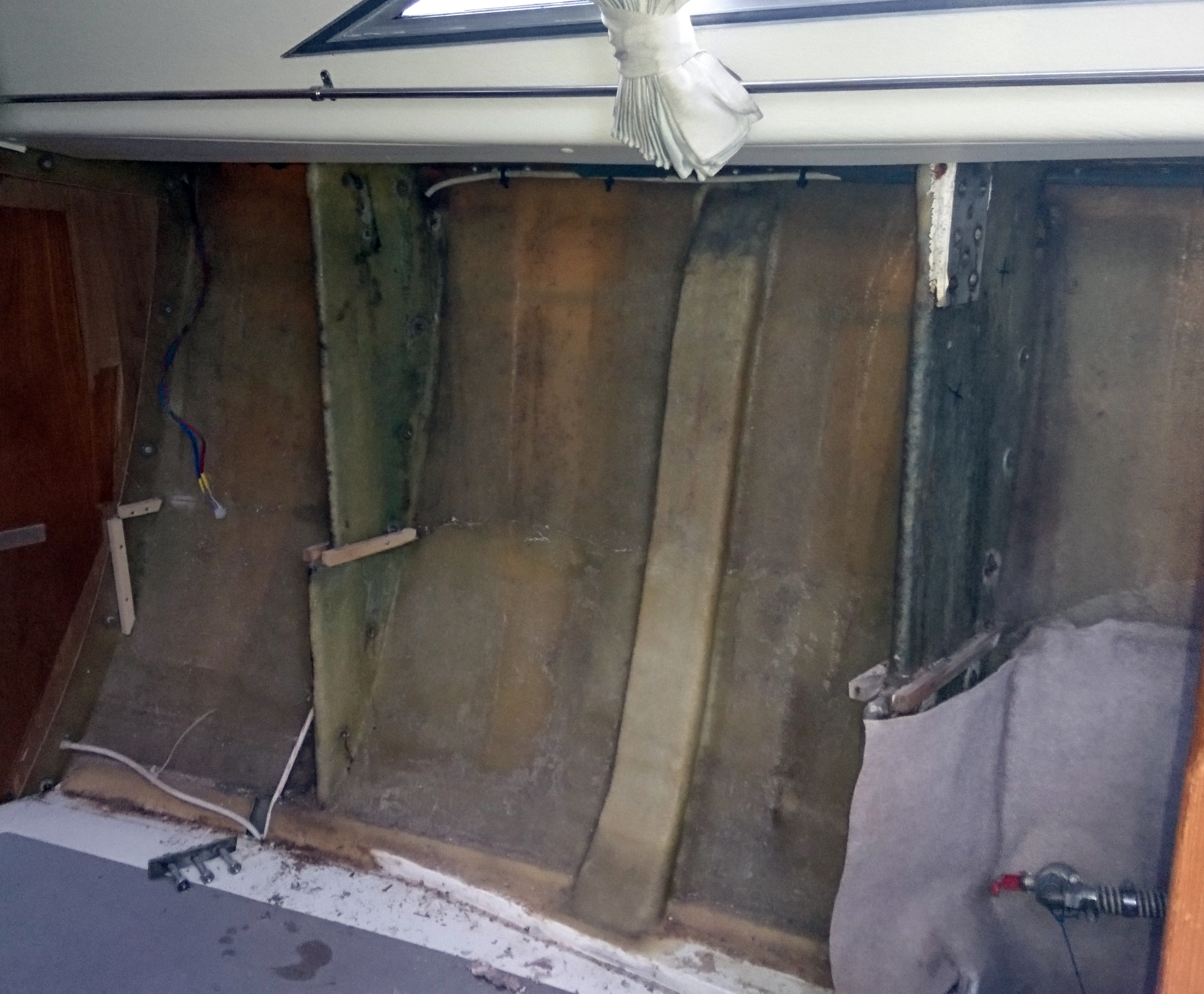
Down below discoloration in the knees laminate and more obvious water stains from the chain plate bolts are a sure sign of trouble.

To track the extent of any damage a core can be drilled out lower down the knee and inspected using a moisture meter if no obvious signs exist.
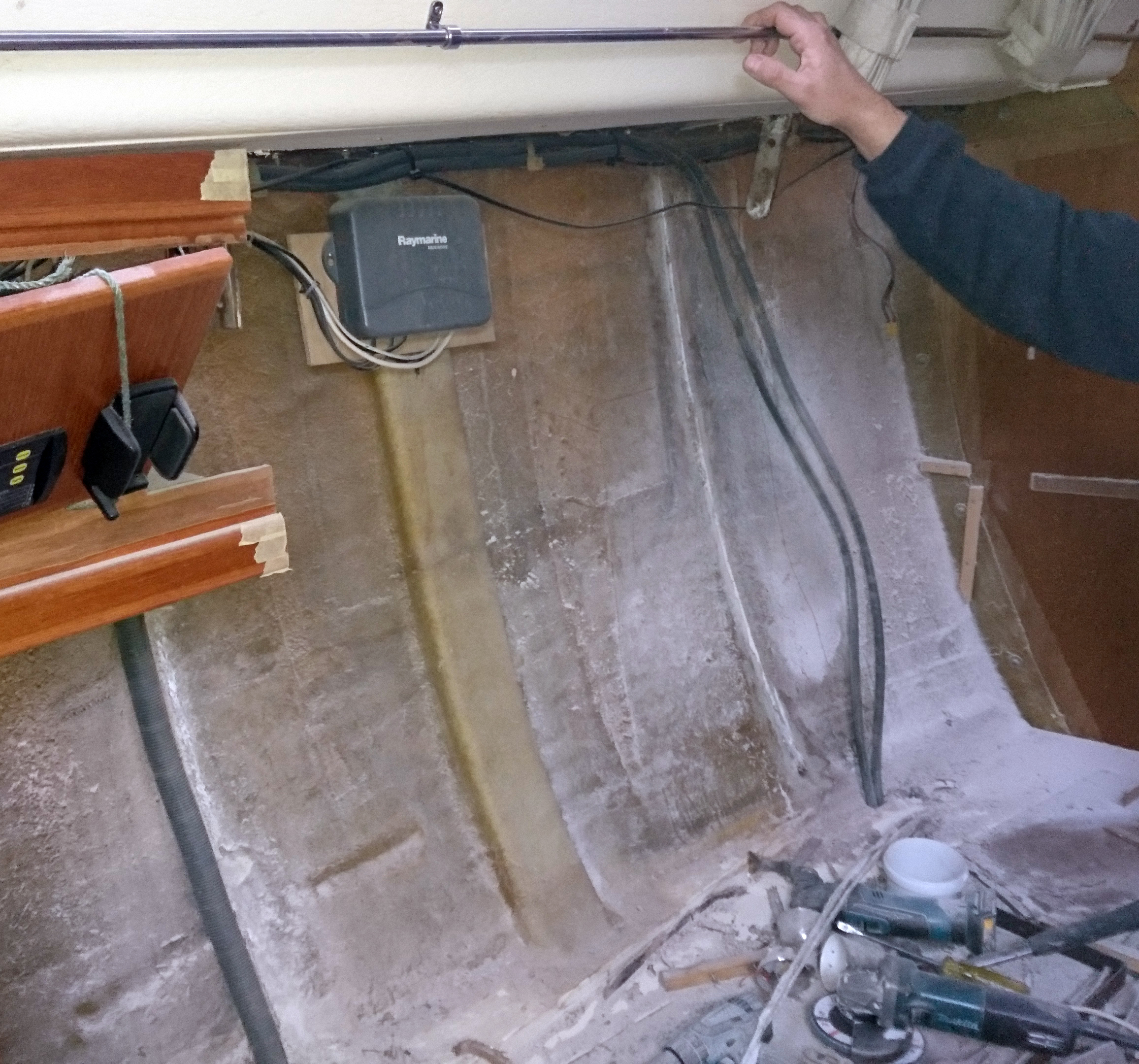
If the damage is irreparable there’s no option other than to cut the old knees out.
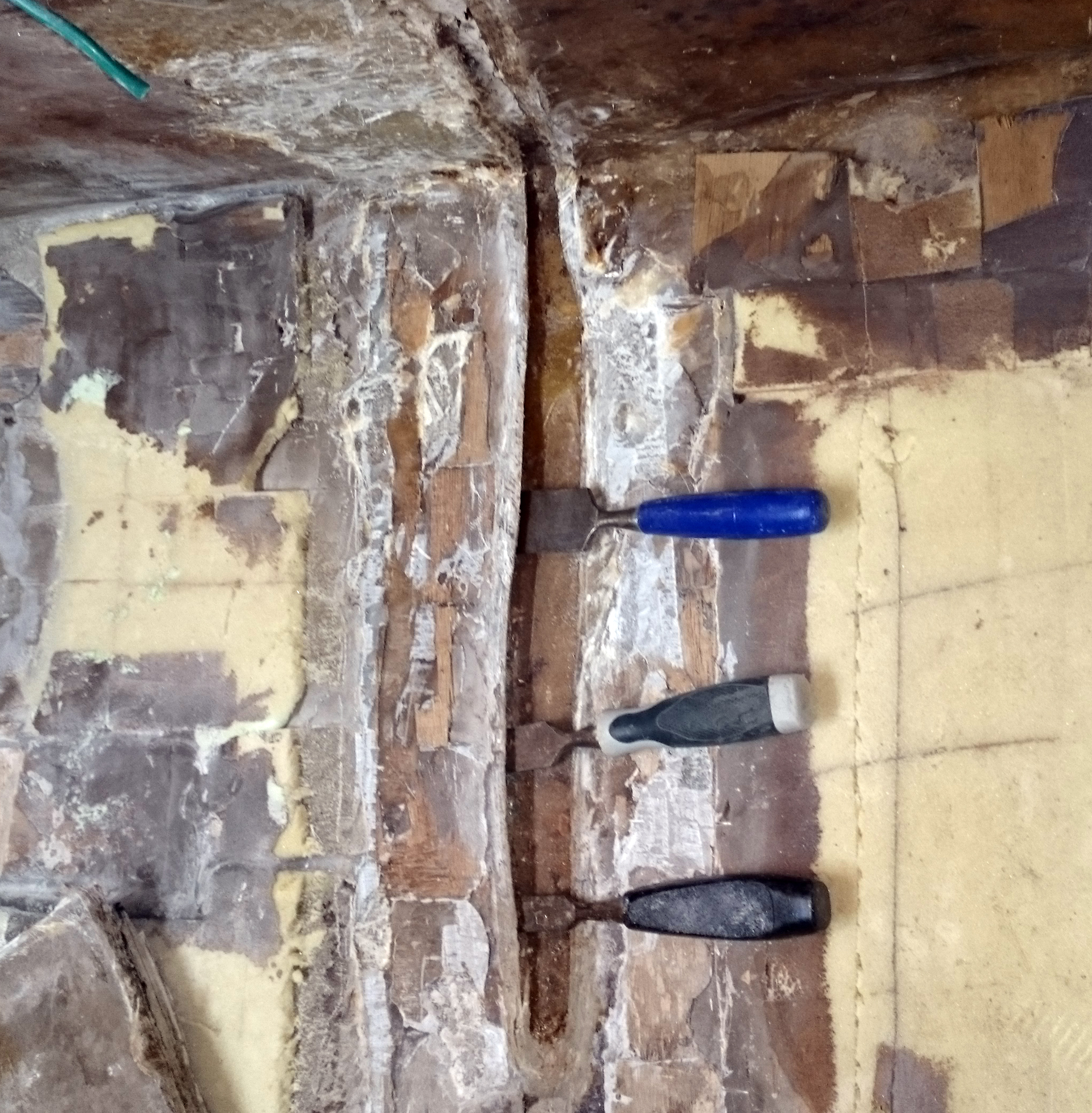
With the knee removed you can see if any other horrors lurk in the background.
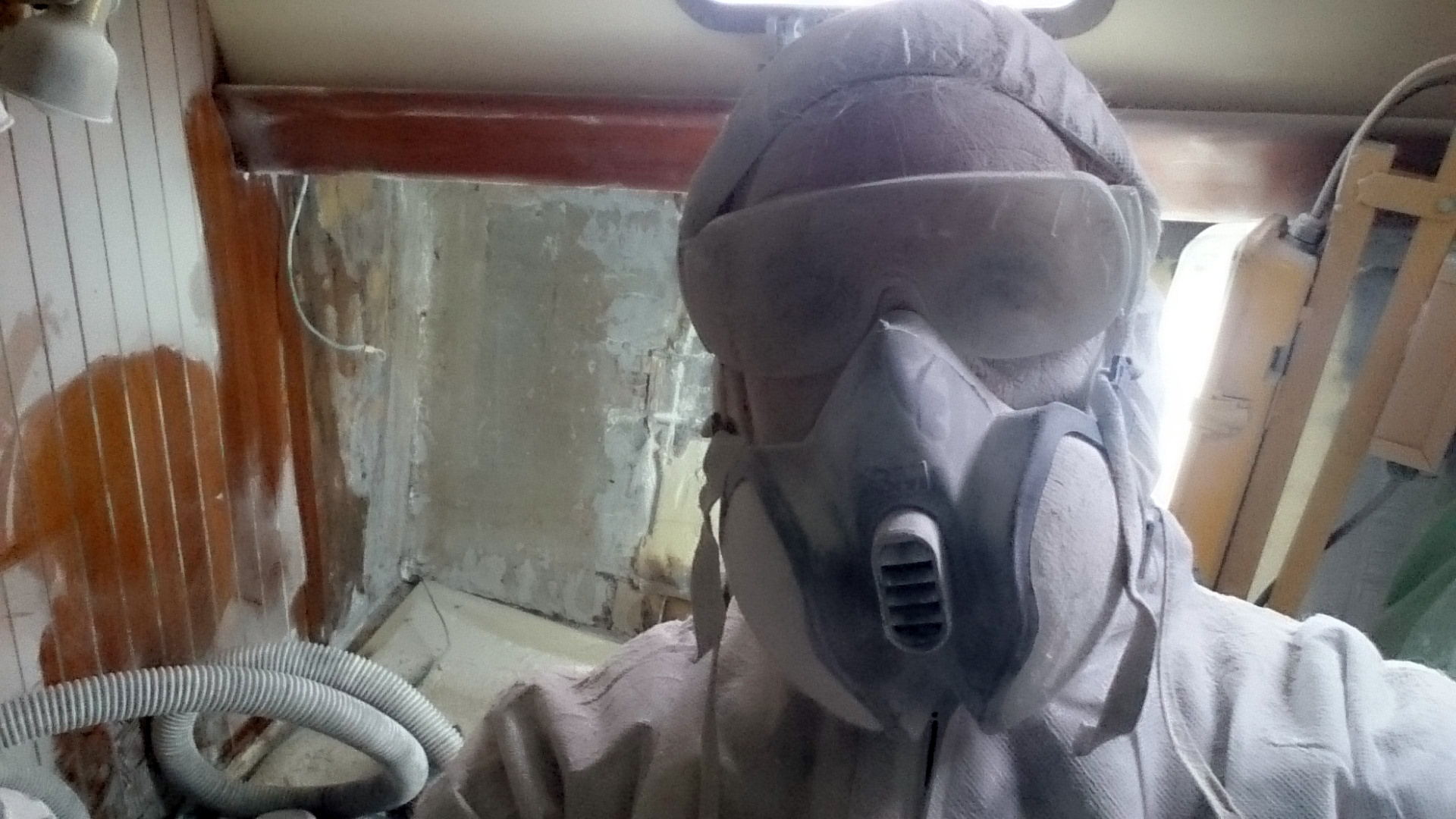
Can’t avoid this, it has to be done. grinding and sanding the interior ready to take the new knees.
The dust this creates in truly unbelievable, but you must not skip this task.
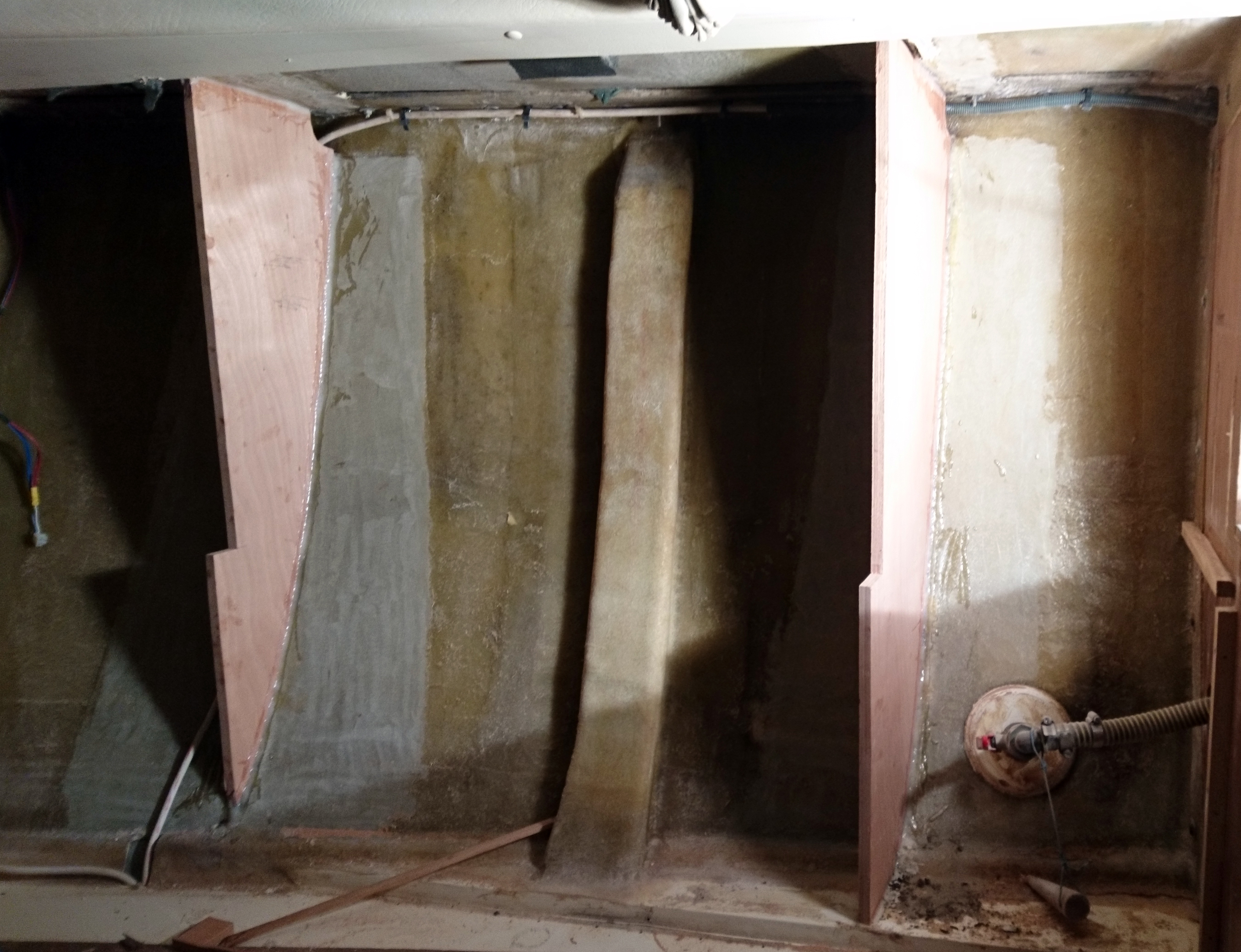
New plywood knees are bonded to the hull on thickened epoxy.
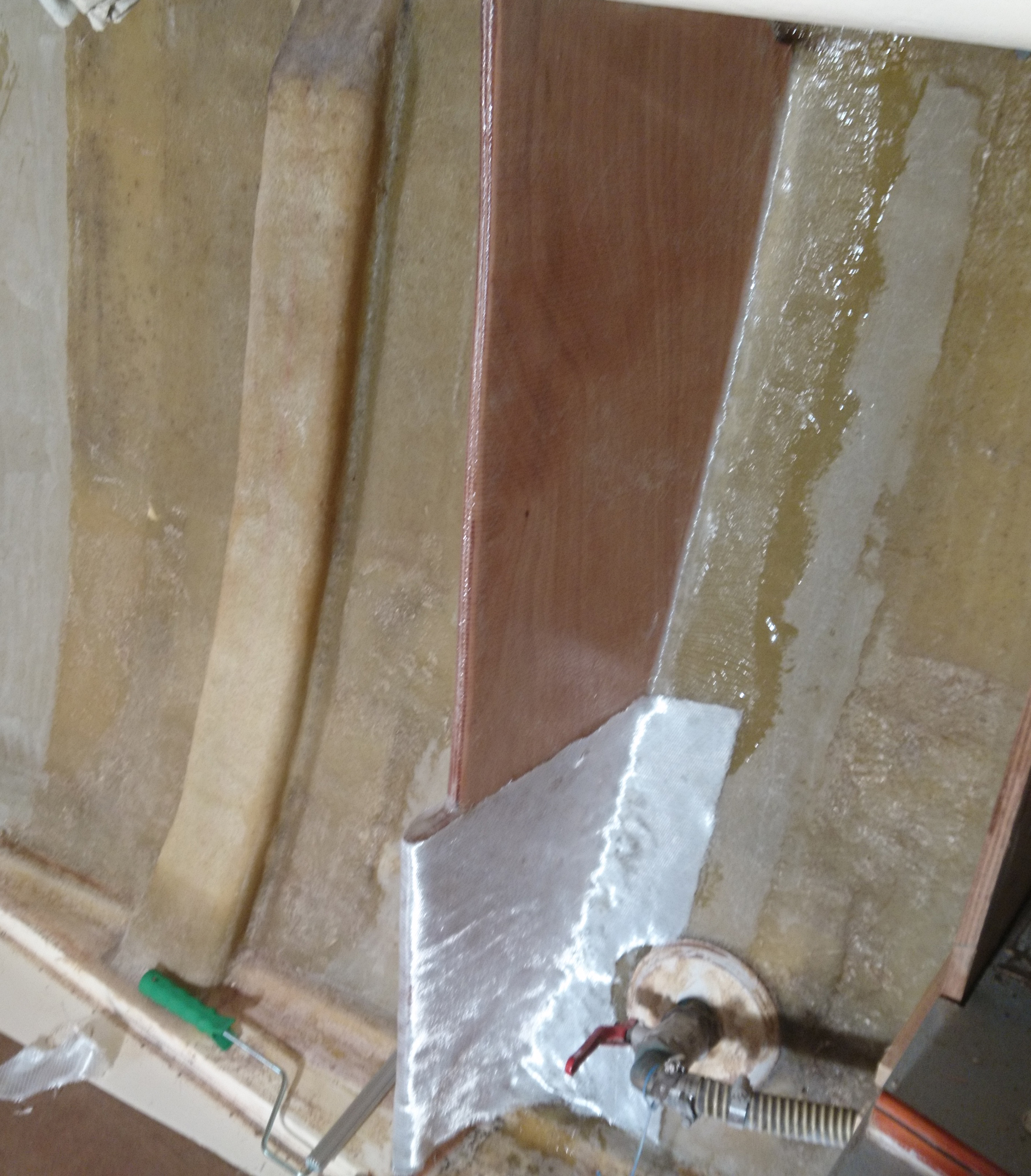
After 2 layers of 300g powder bound csm the first of 4 layers of 300g bi-axial cloth can be applied.
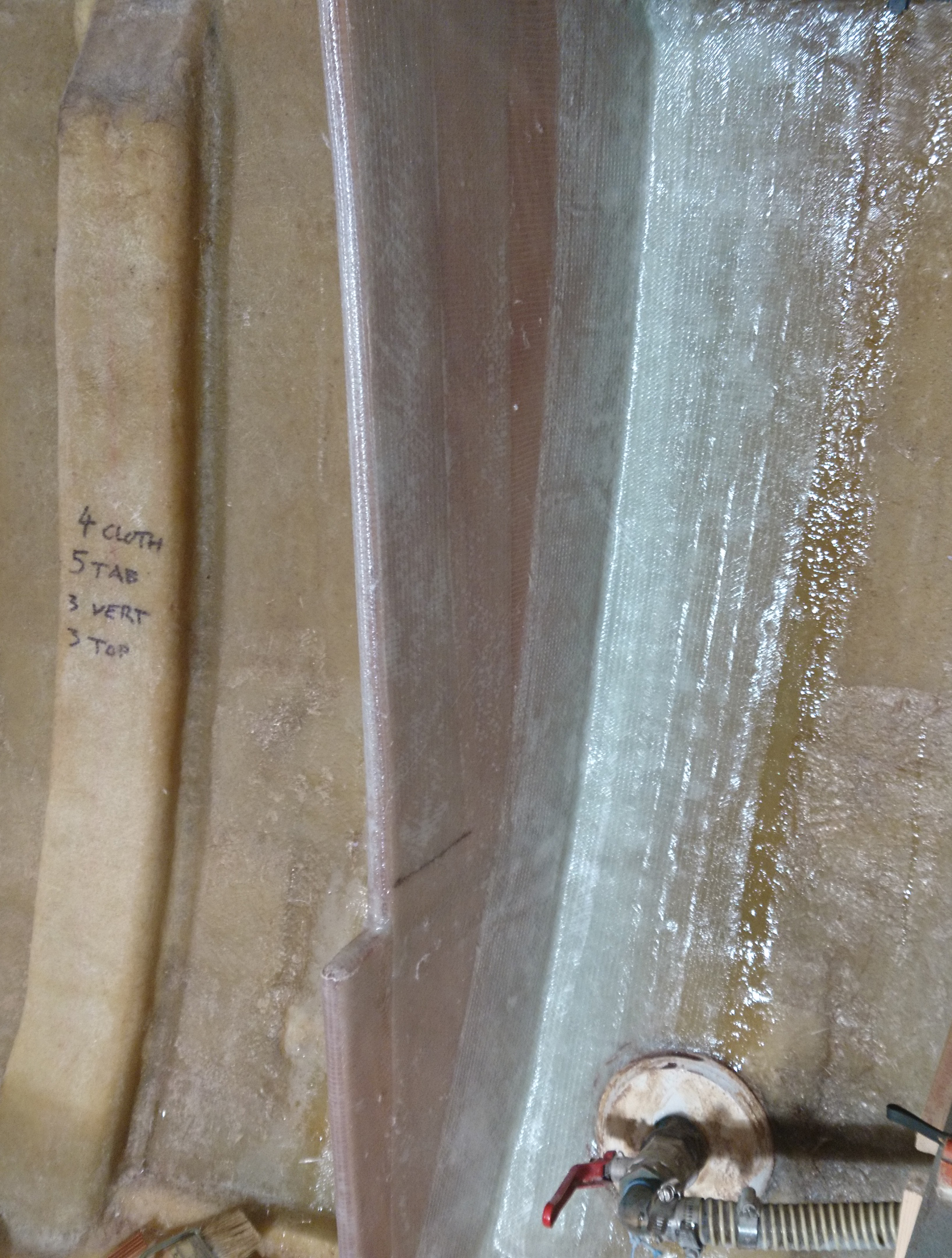
6 staggered layers of 450g bi-axial tape on each side of the knee.
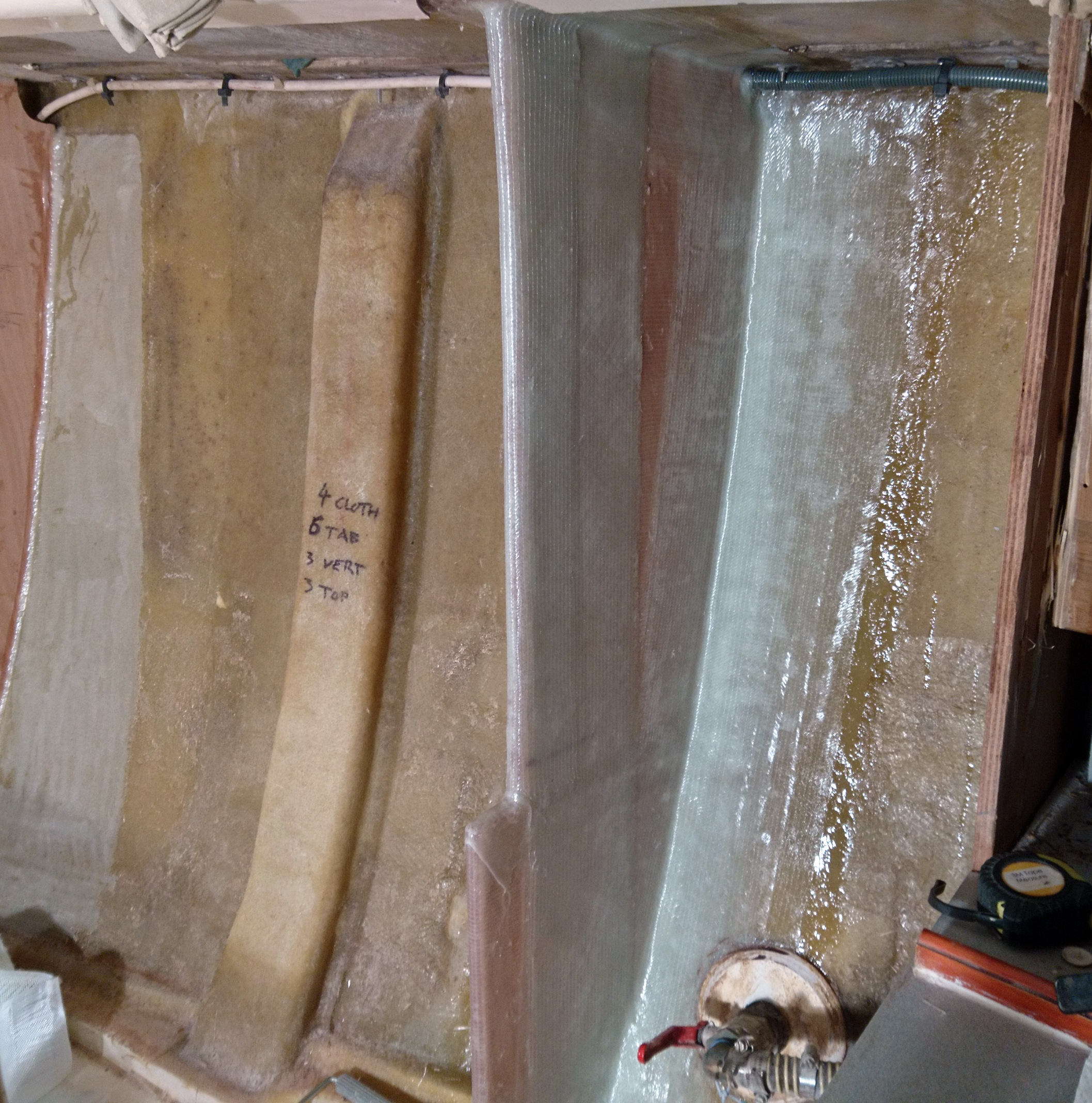
High stress areas have additional layers of 450g bi-axial cloth.
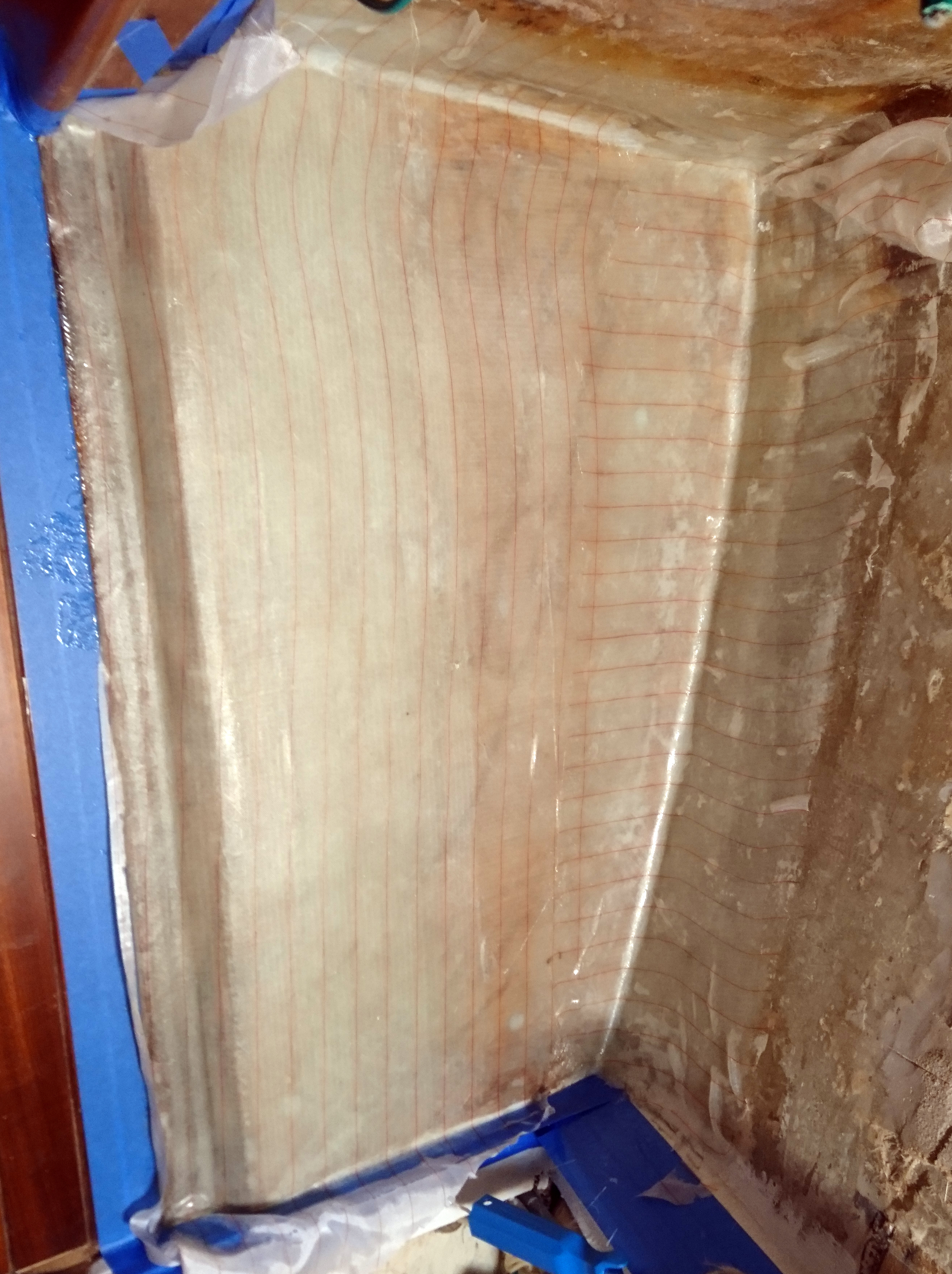
TOP TIP – If you don’t have time to layup in one day use a layer of peel ply.
When you are ready to complete simply peel off the the peel ply and the surface will be ready for the next layers.
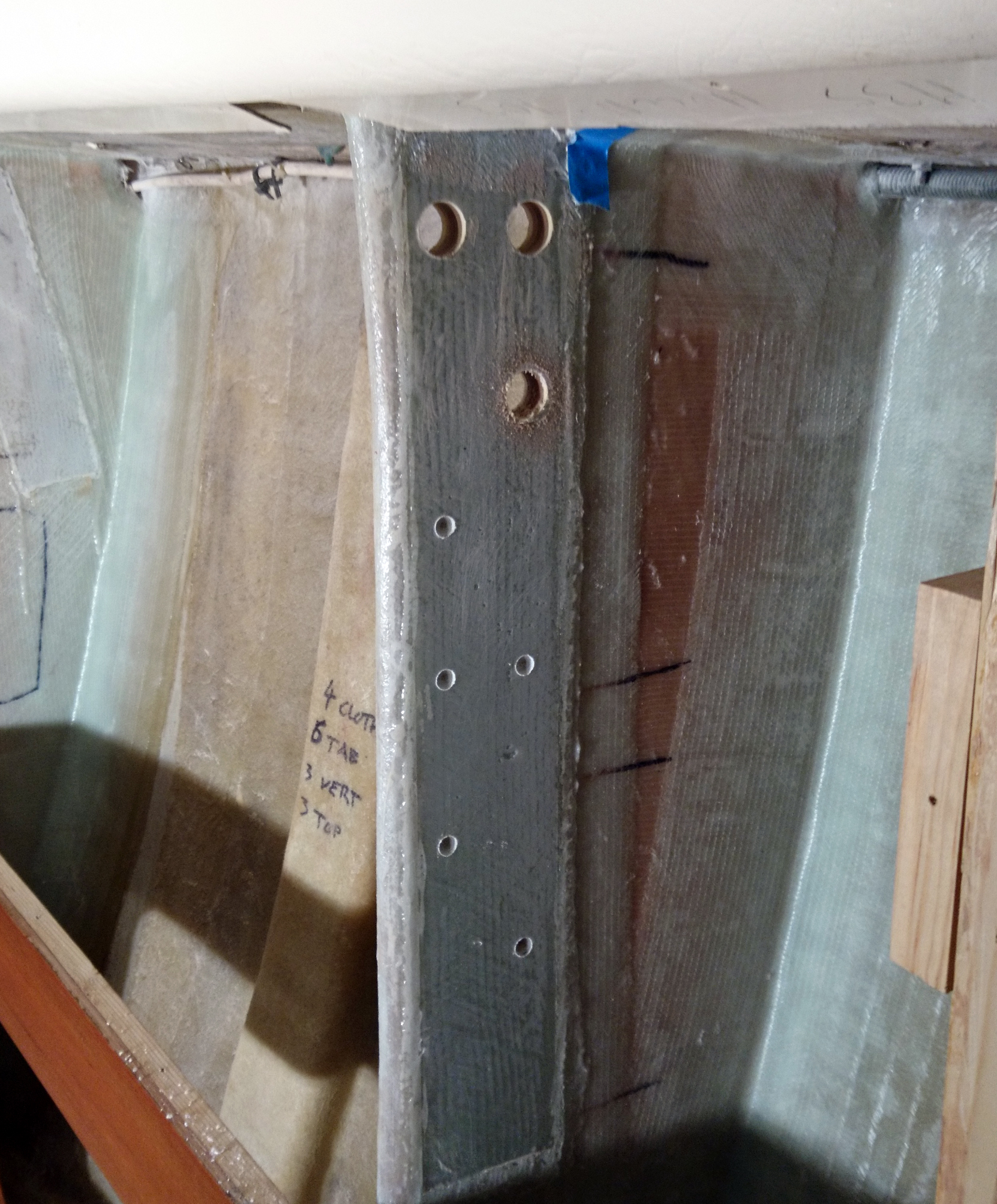
Once mounting bolt locations are identified, 25mm cores are drilled out.
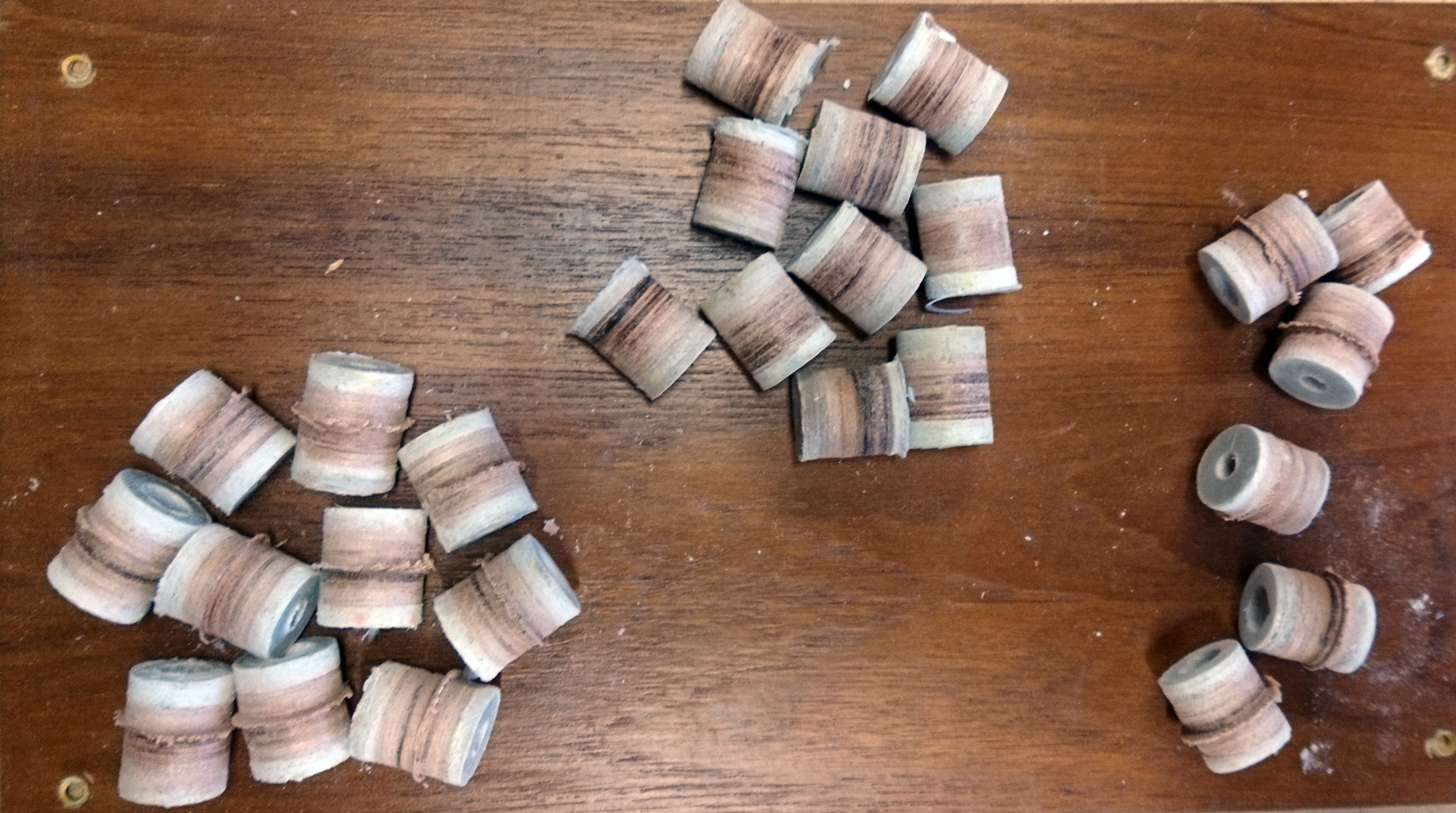
The cores can be inspected for laminate thickness and consolidation.
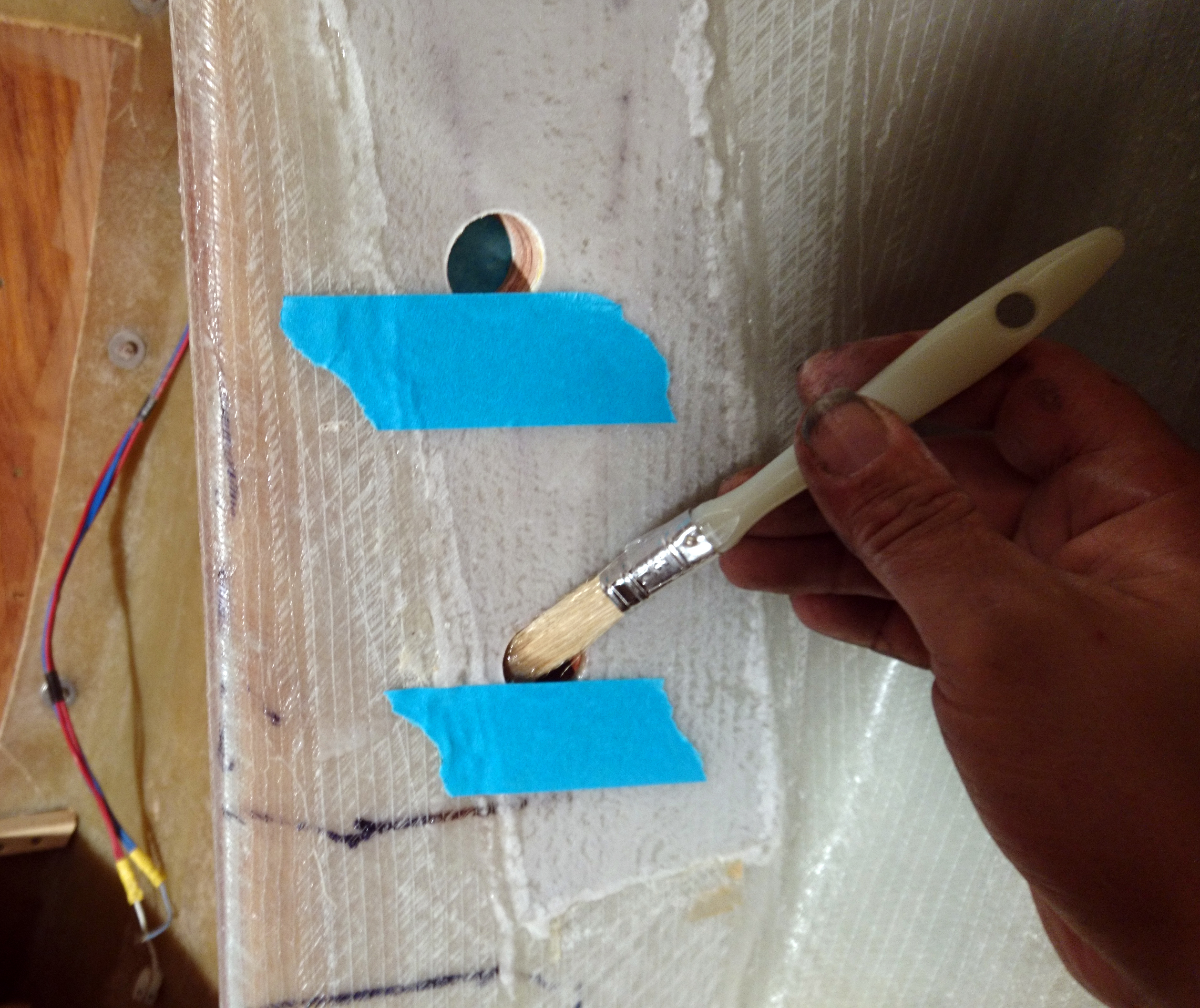
The bare ply in the cored holes needs to be coated with epoxy.
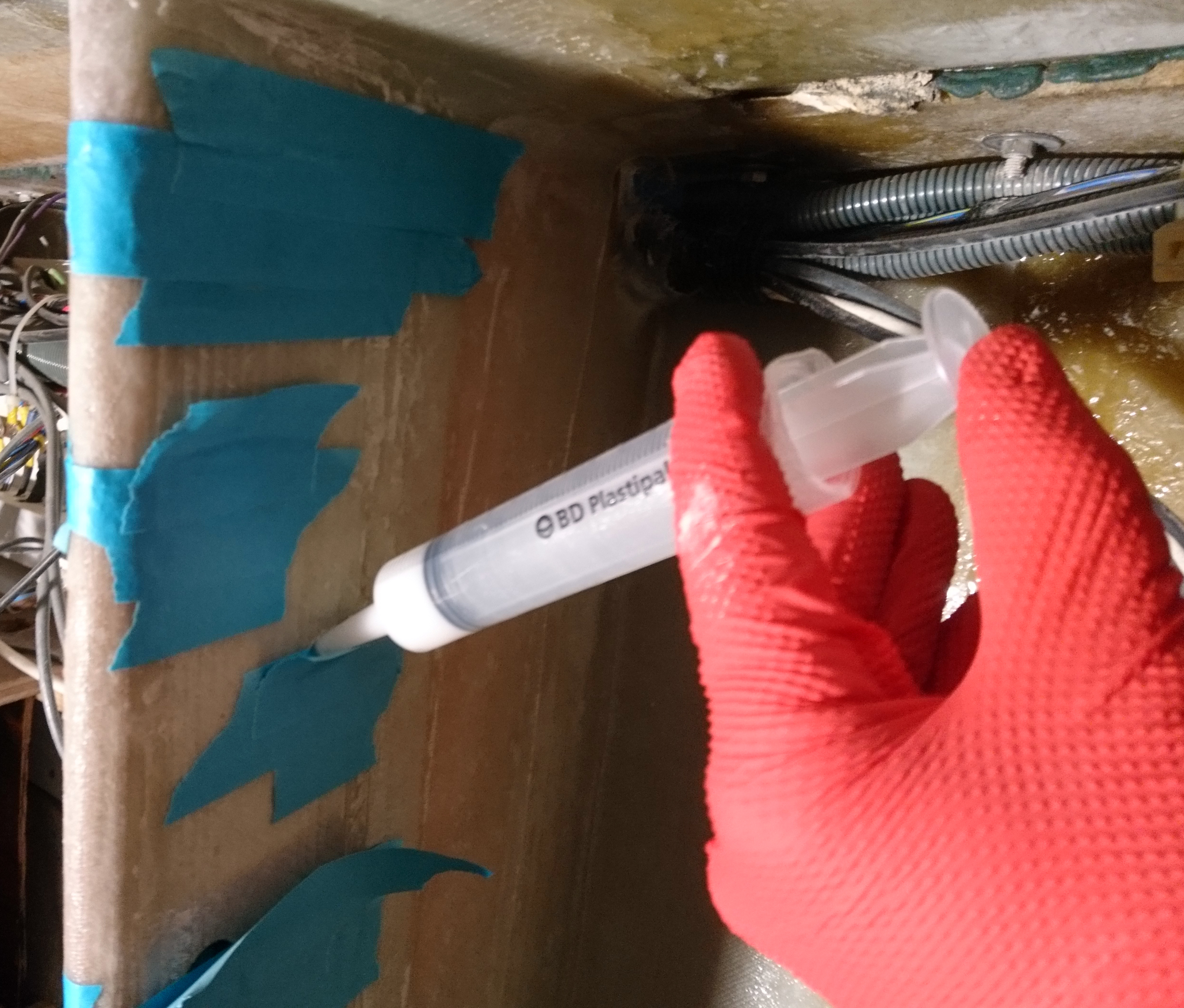
The cores are then filled with thickened epoxy.
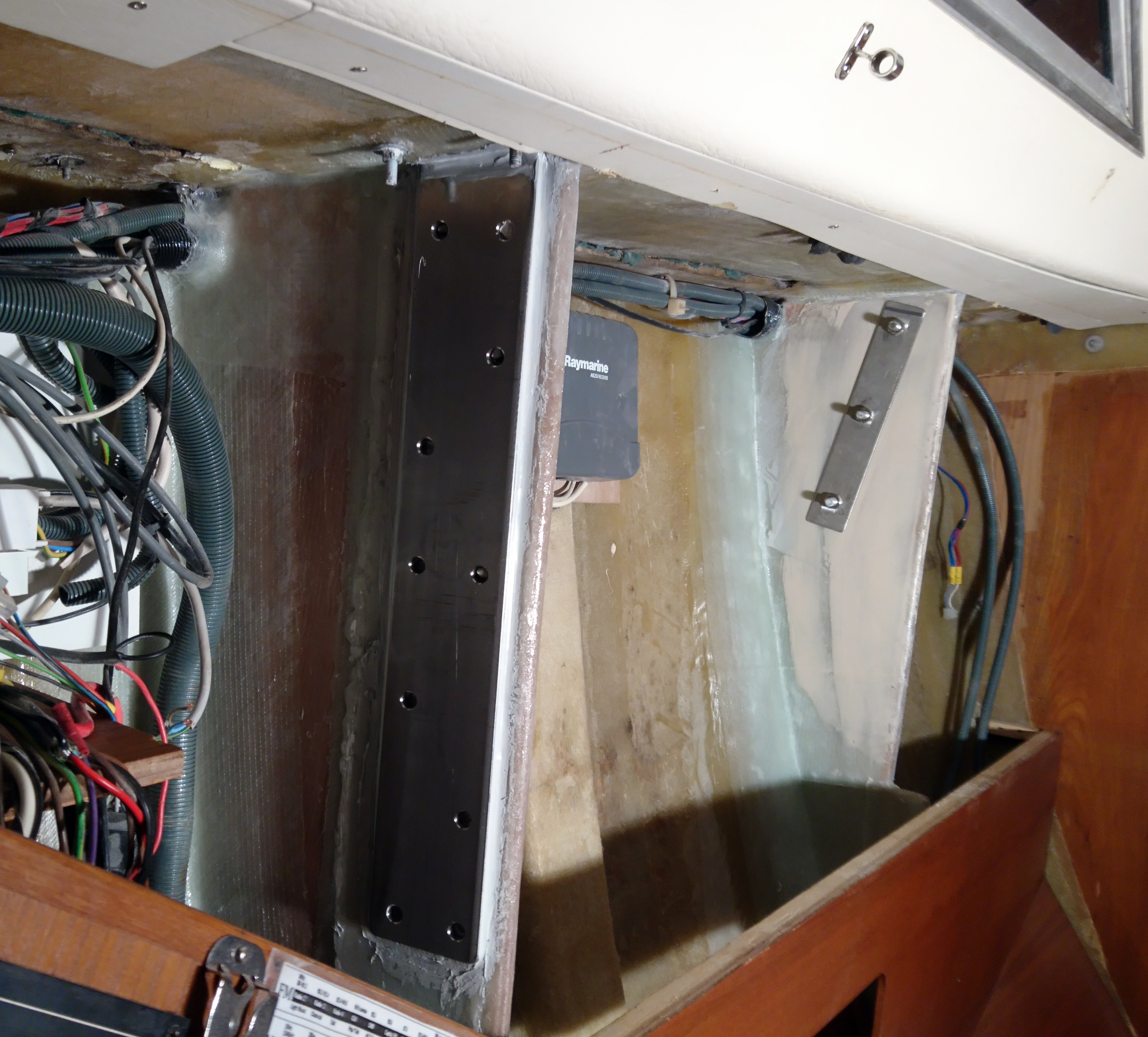
The m12 final holes for the chain plate will have at least 10mm of epoxy silica colloidal around the bolt.
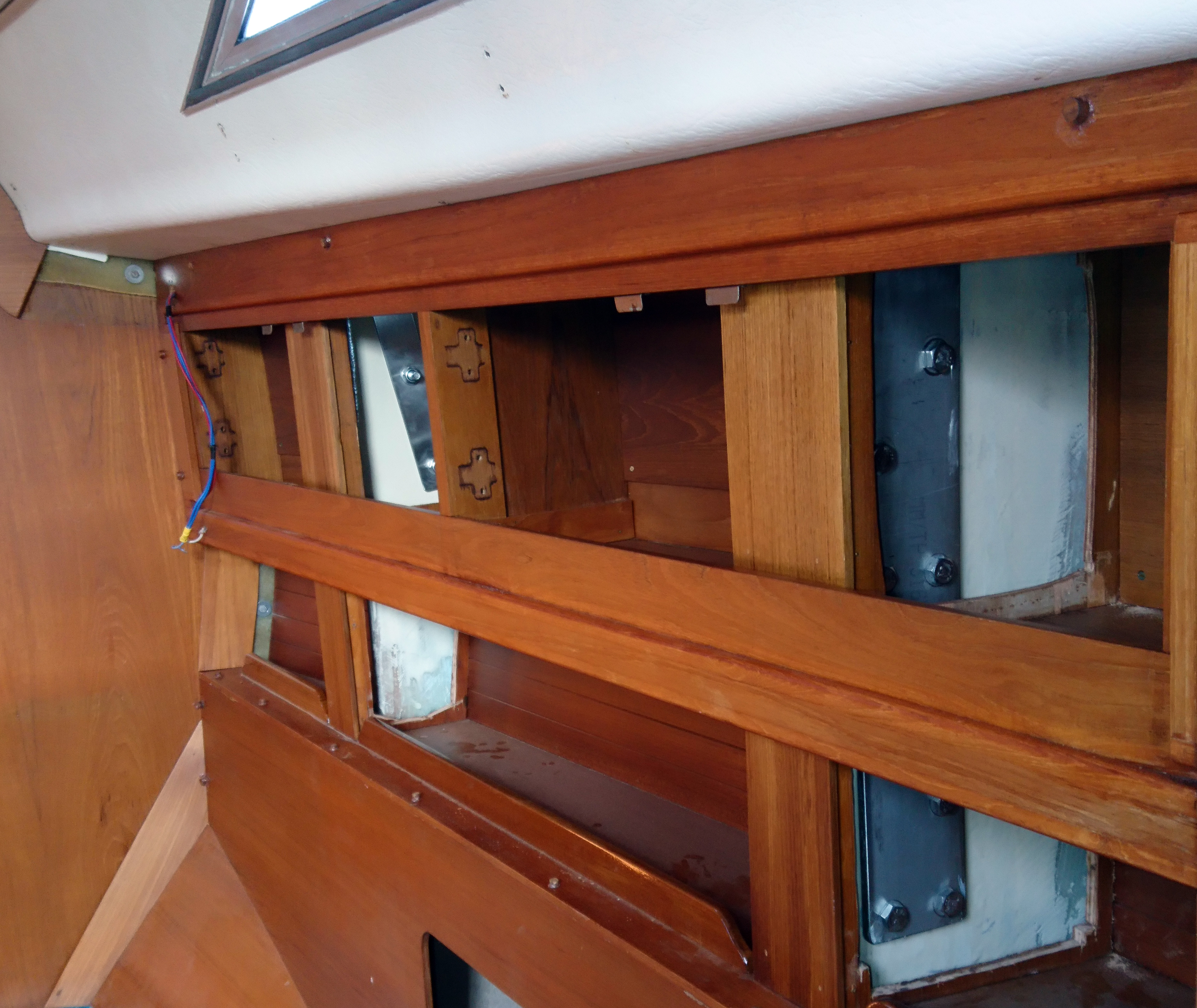
The cabinets were modified to enable easy access to chain plates in future.
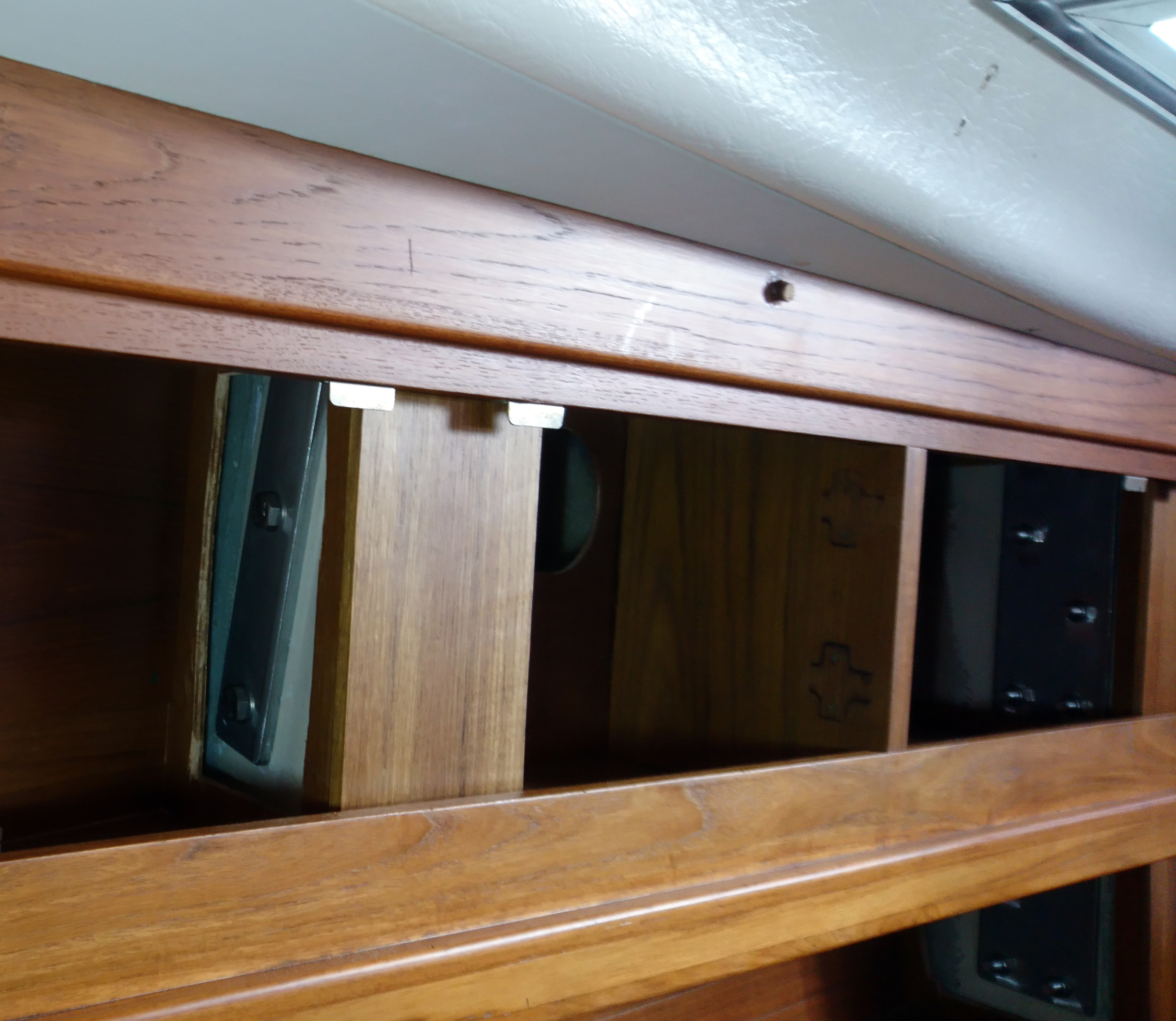
Matching wooden blanking plates will be inserted and screwed in place.
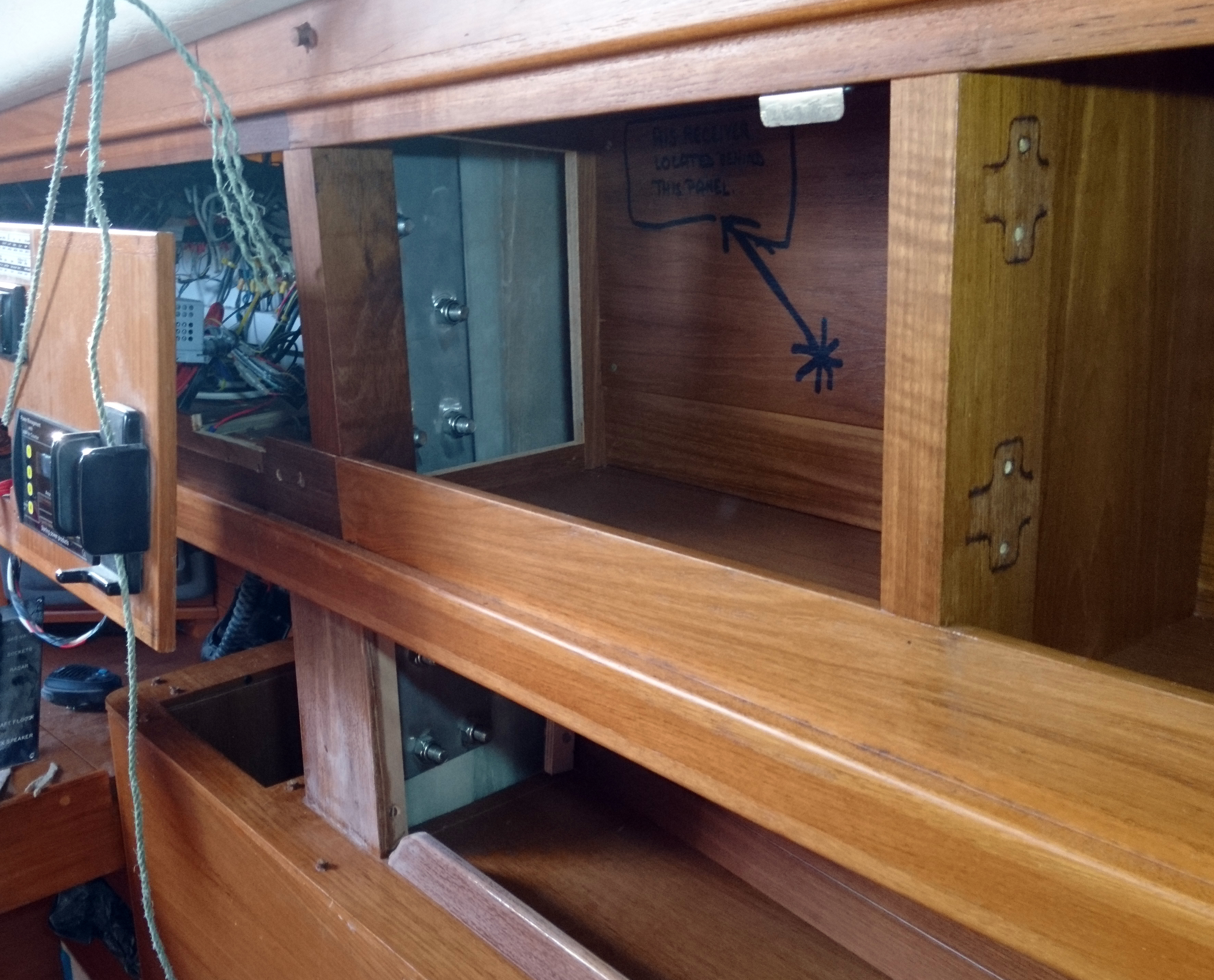
With easy access it will be easy to monitor any water ingress in future.